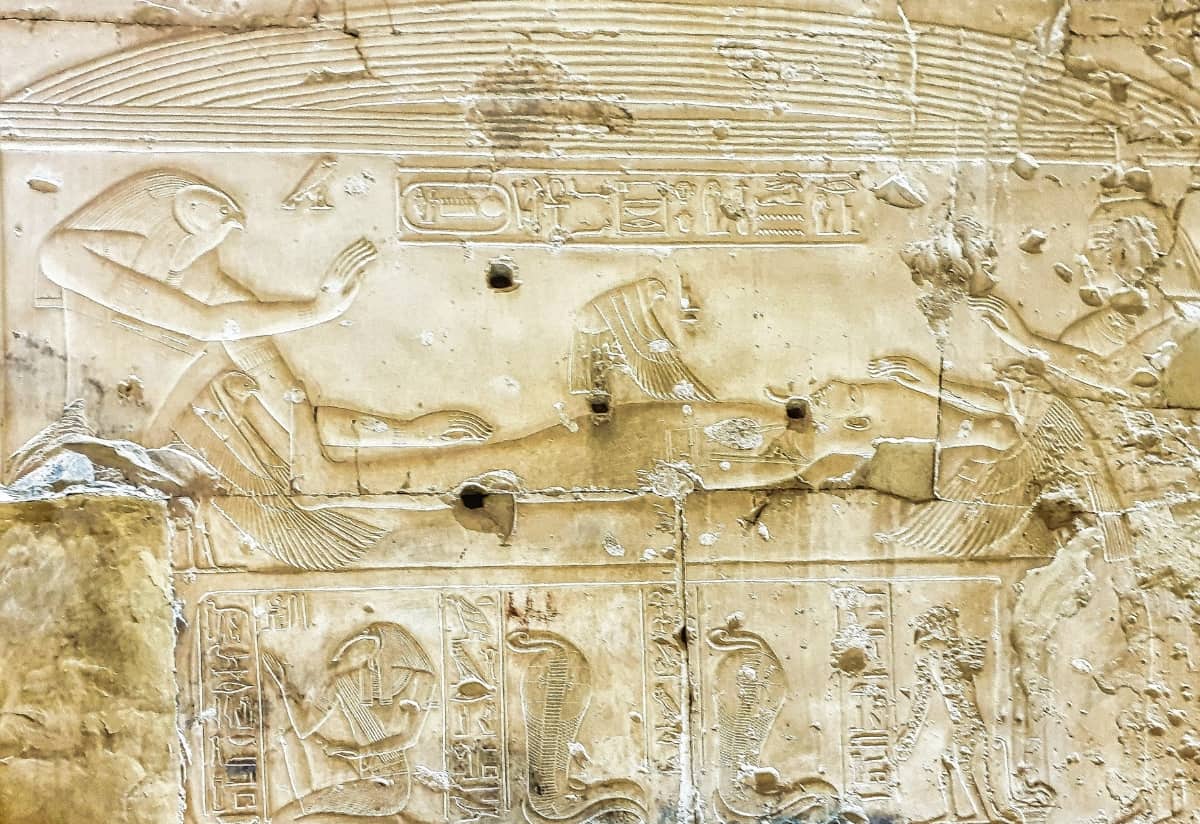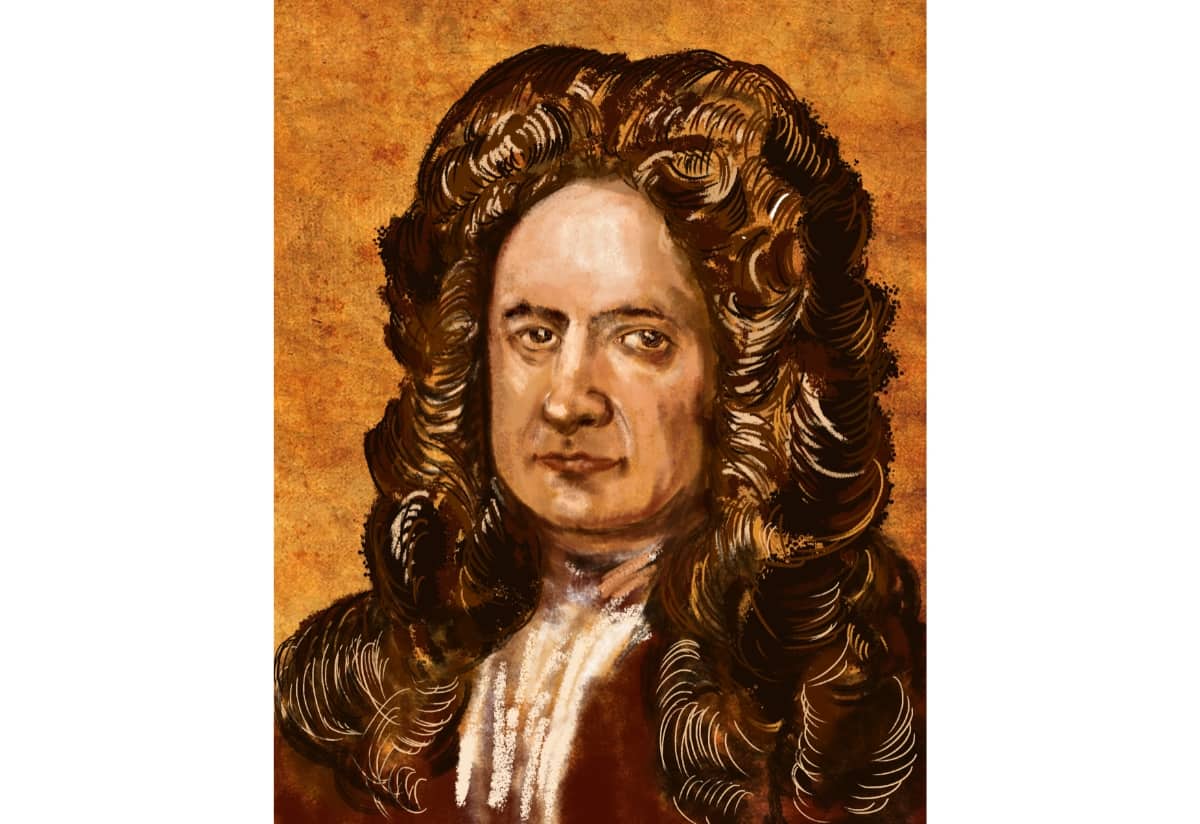When someone suffers a cardiac arrest, every second matters. The brain can only survive for a few minutes without oxygen, and unless someone steps in fast with chest compressions, survival chances plummet. But the journey to what we now know as CPR has been centuries in the making. It’s a technique that’s evolved through trial, error, and innovation, shaped by people from many different backgrounds.
Ancient Roots and Early Inspiration
The idea of reviving the dead is as old as storytelling itself. In the mythology of ancient Egypt, Isis brought Osiris back to life using the breath of life: an early conceptual link to the idea of artificial ventilation. Biblical accounts also record early examples of resuscitation. In the Book of Kings, Elisha is described as reviving children using what we might now think of as rudimentary forms of mouth-to-mouth.

Above: Osiris received the kiss of life from Isis
The Spark of Science in the Renaissance
By the 15th Century, physicians were beginning to approach resuscitation with a somewhat greater degree of clinical observation. Burhan-ud-din Kermani, a Persian doctor, described methods involving physical chest manipulation, a precursor to chest compressions. In 1667, Robert Hooke’s dissection experiments went a step further and proved that respiration itself wasn’t the key to life; it was the supply of fresh air. This would later become a foundational idea in artificial ventilation.

Above: Robert Hooke.
The 18th Century marked a shift from theory to practice.
Several decades later, William Tossach successfully revived a coal miner using mouth-to-mouth ventilation. His work had a huge impact, and we soon saw the establishment of rescue societies, which marked a major breakthrough, particularly in the idea of bystanders intervening to sustain life through ventilation. This is a similar mindset to the concept of bystander CPR today.
By the late 1700s, organisations dedicated to treating cardiac arrest and other sudden deaths were forming across Europe. In London, Thomas Cogan co-founded the Society for the Recovery of Persons Apparently Drowned, later known as the Royal Humane Society. In many ways, their work laid the foundation for today’s emergency response systems.
The History of CPR in the Victorian Era
Victorian innovation continued the progress. Marshall Hall proposed a rolling technique for ventilation in 1856, but Henry Silvester soon replaced it with a method involving the movement of the arms while the patient lay on their back. This method gained wide support and endured well into the next century.
The first mentions of direct chest compressions also date to this period. In 1868, John D. Hill used sternal pressure to aid inhalation, and over 20 years later, Friedrich Maass was the first to document successful external cardiac massage in a human. This marked a crucial turning point: circulation now had a role in resuscitation alongside ventilation.
The 20th-Century Reinvention
As techniques improved, artificial ventilation methods became more refined. By the turn of the 20th Century, Edward Schafer introduced his prone-based Schafer method, later overtaken by Holger Nielsen’s technique.
A major breakthrough came in 1946, during a poliomyelitis outbreak.
Anaesthesiologist James Elam used mouth-to-mouth ventilation to save patients when mechanical ventilators failed. His work and subsequent collaboration with Peter Safar proved that expired-air ventilation could maintain oxygen levels effectively.
By the late 1950s, these techniques were widely validated. An ad hoc panel of experts endorsed mouth-to-mouth for infants and children, and the American Medical Association followed suit in 1958. From this point, artificial ventilation re-entered mainstream medical practice.
The Discovery of Modern Chest Compressions
Although Maass had described external cardiac massage in the 19th Century, the idea was largely overlooked until 1958. That year, researchers at Johns Hopkins (Kouwenhoven, Jude, and Knickerbocker) were studying defibrillation in dogs when they noticed that pressing on the chest produced a pulse. This led to experiments defining the ideal rate and position for compressions.
Their technique was first used on a woman in cardiac arrest following anaesthesia. She recovered, and a 1960 study reported a 70% survival rate in 20 hospital patients treated with chest compressions. The value of compression as a bridge to defibrillation was now firmly established.
Combining Different Practices
In 1960, researchers formally introduced a method combining mouth-to-mouth and chest compressions. The A-B-C method (Airway, Breathing, Circulation) was adopted and taught widely. Training for laypeople remained controversial. While some organisations believed only medical professionals should know how to do CPR, others disagreed. Despite the controversy, by 1966, CPR guidelines were standardised, and training manikins were first introduced.
Building the System around CPR
In 1965, Frank Pantridge created the first mobile coronary care unit. His team’s success in Belfast influenced similar pre-hospital care programmes around the world. In the US, King County, Washington, led the way in training emergency responders and laypeople alike how to do CPR.
Dispatcher-assisted CPR, introduced in 1981, increased bystander intervention dramatically. The “chain of survival” model of early access, early CPR, early defibrillation, and early advanced care became the framework for resuscitation efforts and is still used today.
Resuscitation in the 21st Century
In recent years, efforts to enhance CPR have continued. Trials involving drones to deliver defibrillators, as well as ECMO-CPR (heart-lung bypass during ongoing CPR), have shown promise. As understanding of both chest compressions and ventilation continues to evolve, so too do the tools and techniques. Advancements in CPR training manikins have helped to provide learners with clearer feedback and more realistic training circumstances.

Keeping CPR Effective Takes Innovation
When it comes to saving lives, good training is non-negotiable. At Innosonian, we develop cutting-edge Brayden manikins that bring CPR to life. Using innovative visual technology, our manikins show learners how effective their compressions are in real-time.
So, if you’re delivering classroom training or refreshing your own skills, our tools are built to give you the confidence to act when it matters most. If you want to upgrade your CPR training, take a closer look at our Brayden manikins or get in touch with any questions. We’re here to help you make every second count.

